Disclosure: This article contains affiliate links. We may earn a commission from purchases at no extra cost to you, which helps our travel content.
Twenty-three years in the FBI teaches you to notice patterns, and the pattern I've observed across five continents is simple: to truly understand a culture, follow the food trail. My recent weekend in Medan, North Sumatra's bustling capital, confirmed this investigative approach yet again. As someone who's spent decades protecting archaeological sites and studying ancient civilizations, I find food markets and traditional kitchens to be living museums—places where history continues uninterrupted through recipes passed down generations. Medan sits at the crossroads of multiple culinary influences: indigenous Batak traditions, Chinese immigrants, Indian traders, and colonial Dutch all left their mark on this gastronomic landscape. What follows is my field report on navigating this complex flavor terrain on a government salary. No fancy expense accounts here—just strategic deployment of resources to maximize culinary intelligence gathering.
The Tactical Approach to Medan's Food Markets
Any proper investigation requires methodical groundwork, which is why I began at Pasar Sambas, one of Medan's oldest traditional markets. Arriving at 0630 hours provided optimal conditions: cooler temperatures, freshest produce, and vendors still willing to explain their wares before the midday rush.
The market presents itself as a labyrinth of narrow pathways lined with stalls displaying pyramids of chili peppers in varying shades of green to crimson, mountains of turmeric and galangal roots, and bundles of lemongrass and kaffir lime leaves. The olfactory evidence was overwhelming—layers of aromas from pungent durian fruit to sweet mangosteen.
For documentation purposes, I carried my compact camera, which proved invaluable for capturing market scenes without drawing undue attention. Its low-light capabilities handled the market's shadowy corners admirably.
My investigation led to a stall operated by Ibu Mariam, a spice vendor whose family has occupied the same market position for four generations. Her collection of andaliman pepper—a citrusy, numbing spice unique to North Sumatra—became a focal point of my inquiry. This pepper, I learned, is essential to authentic Batak cuisine and nearly impossible to procure stateside.
The market follows a logical organization system, with wet goods (meat, fish) segregated from dry goods (spices, grains). This isn't arbitrary but reflects traditional Sumatran spatial arrangements that date back centuries—a living archaeological record of commerce patterns.
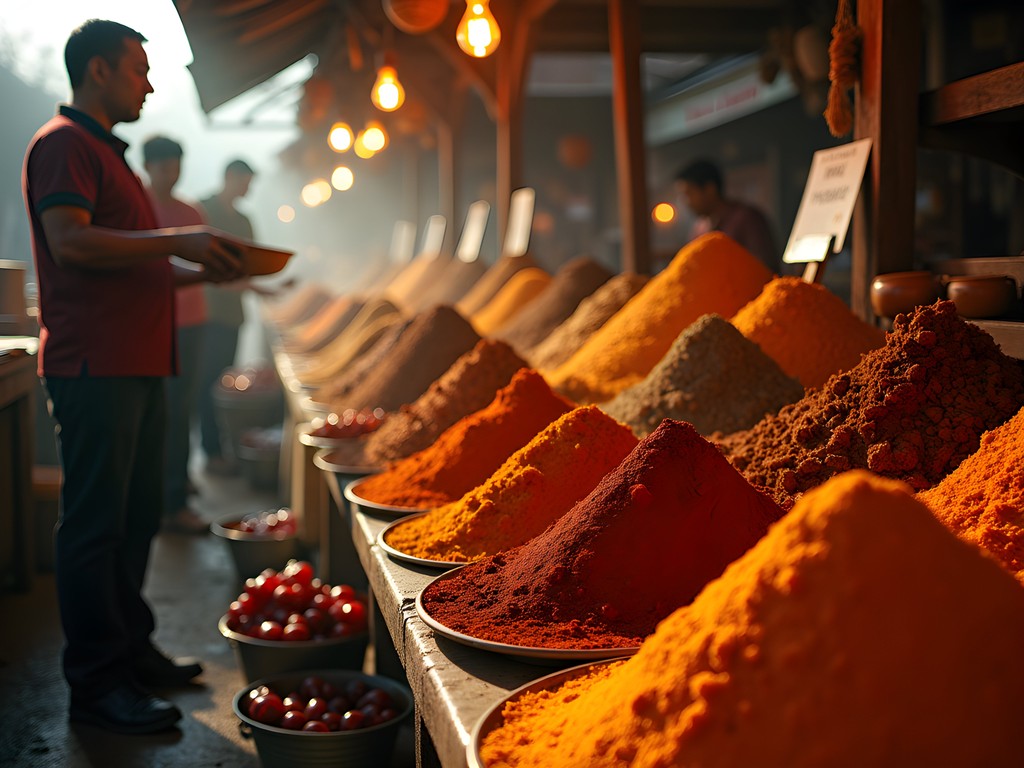
💡 Pro Tips
- Visit markets between 6:30-8:00 AM for the freshest selection and fewer crowds
- Bring small denominations of Indonesian rupiah for easier transactions
- Ask permission before photographing vendors or their goods
Decoding Medan's Signature Dishes
After establishing baseline knowledge at the market, I proceeded to fieldwork: systematic sampling of Medan's defining dishes. This required moving beyond tourist establishments to locations frequented by locals—always the most reliable sources.
My first target was Soto Medan, a coconut-based soup with fragrant spices, shredded chicken, and bean sprouts. Unlike its Javanese counterparts, Medan's version incorporates potatoes and is served with a side of sticky rice rather than standard white rice. Analysis of this dish reveals historical trade connections—the coconut milk technique showing clear Thai influence while the spice profile points to Indian trade routes.
At Jalan Selat Panjang, I located Kedai Bihun Bebek Asie, an establishment dating to 1960. Their specialty, Bihun Bebek (duck vermicelli soup), demonstrates Chinese culinary techniques applied to local ingredients—an archaeological layer of migration patterns expressed through food preparation methods.
Most revealing was my encounter with Bika Ambon, a honeycomb-textured cake that, despite its name, originated in Medan rather than Ambon. The fermentation process and use of coconut milk points to indigenous techniques predating colonial contact, while the addition of European-introduced vanilla represents a colonial-era modification.
To record these culinary findings properly, I relied on my travel journal with acid-free paper, which has accompanied me from Guatemalan ruins to Jordanian excavation sites. Its water-resistant cover proved particularly valuable when a sudden downpour struck during my street food exploration.
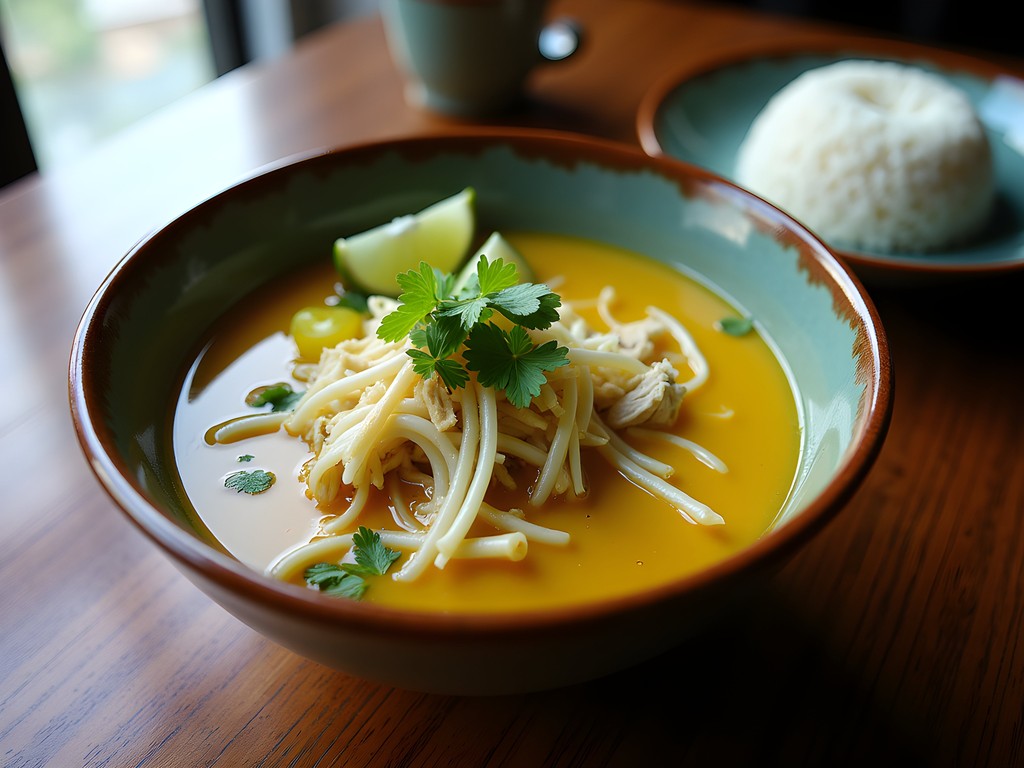
💡 Pro Tips
- Order half portions when possible to sample more dishes
- Look for establishments with high turnover of local customers
- Learn the phrase 'tidak pedas' (not spicy) if you have low spice tolerance
The Archaeological Evidence: Culinary Fusion in Kampung Keling
Medan's Little India district, locally known as Kampung Keling, presents a fascinating case study in cultural preservation through culinary tradition. My investigation of this area focused on how Indian culinary techniques merged with Sumatran ingredients over centuries of trade and migration.
The neighborhood centers around Shri Mariamman Temple, built in 1884 by Tamil immigrants. Surrounding this cultural anchor point are numerous establishments serving food that documents this cultural exchange. At Kedai Cek Mat, I observed the preparation of Murtabak, a stuffed pancake of Middle Eastern origin that reached Sumatra via Indian Muslim traders. The Medan version incorporates local aromatics like andaliman pepper and torch ginger—evidence of culinary adaptation to local conditions.
Particularly noteworthy was the discovery of Kari Kambing Medan, a goat curry whose preparation methods differ significantly from both Indian and Malay versions. The incorporation of fermented durian (locally called tempoyak) represents an indigenous Sumatran element integrated into an imported cooking technique—a perfect archaeological stratigraphy of flavor.
The area's street configuration itself tells a story, with narrow pathways reminiscent of South Indian market towns rather than typical Indonesian urban planning. This physical environment has preserved cooking methods that might otherwise have been lost to modernization.
For those conducting their own culinary investigations in this district, I recommend water purification tablets as a precautionary measure. While most established restaurants maintain good standards, smaller street vendors may use untreated water in food preparation.
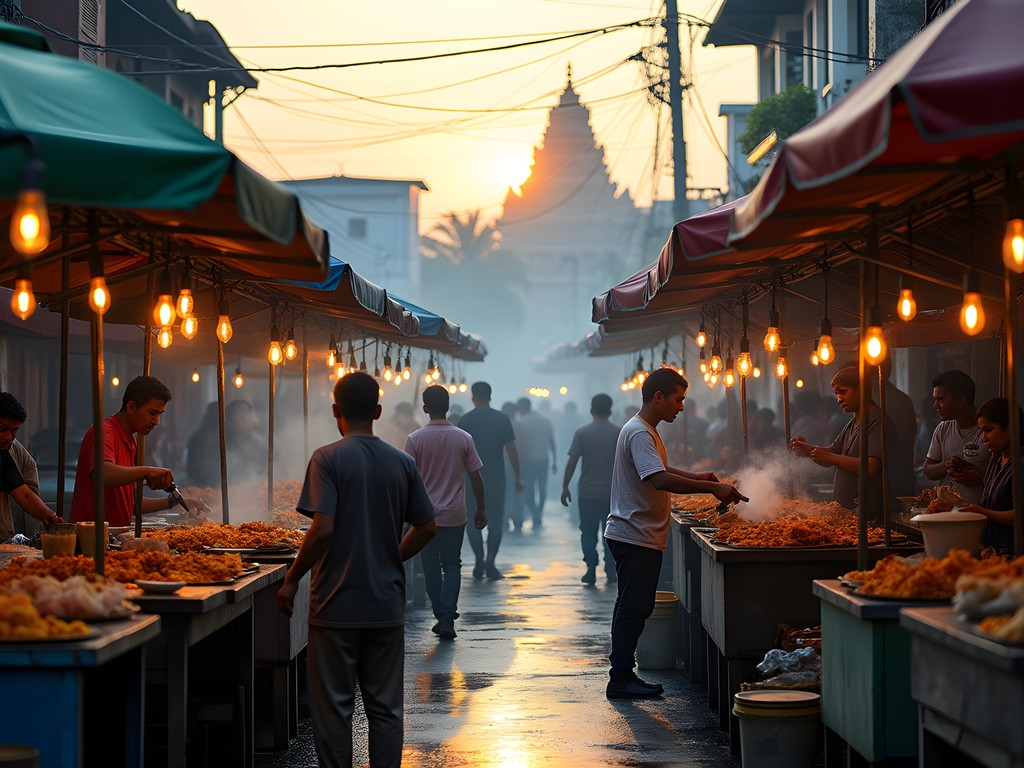
💡 Pro Tips
- Visit Kampung Keling during late afternoon when food stalls are fully operational
- Try Martabak Medan with its unique local spice blend
- Observe the cooking process when possible—vendors are often proud to demonstrate their techniques
Field Notes on Medan's Chinese Culinary Influence
The Chinese community's impact on Medan's food landscape presents another layer of cultural stratification worth investigating. Concentrated primarily around Kesawan and Jalan Selat Panjang, these culinary artifacts date back to the 19th century when Chinese laborers arrived to work on Deli's tobacco plantations.
My systematic sampling began with Kwetiau Ateng on Jalan Semarang, an establishment dating to 1953. Their signature dish—flat rice noodles stir-fried with seafood—demonstrates wok hei, the 'breath of the wok' technique requiring precise heat control. This cooking method remains unchanged since its introduction to Sumatra, preserved through generational knowledge transfer.
Of particular interest was the discovery of Bihun Bebek Asie (duck rice vermicelli), which shows clear Teochew influence but incorporates local Sumatran spices absent in its Chinese ancestor dish. The establishment's third-generation owner, Mr. Lim, confirmed my hypothesis that his grandfather modified the original recipe in the 1960s to accommodate local palates—a textbook example of culinary adaptation.
Perhaps most revealing was Medan's Bakmi, a noodle dish displaying Hokkien techniques but utilizing local ingredients. The incorporation of andaliman pepper and torch ginger represents indigenous elements absent in mainland Chinese versions.
My investigation of Chinese-Indonesian bakeries revealed Bolu Meranti, a rolled cake that combines European baking techniques (likely introduced during Dutch colonial period) with Chinese flavor profiles and local pandan leaves—a three-culture fusion in a single food item.
During these extended culinary investigations, my insulated water bottle proved essential for maintaining hydration in Medan's tropical climate without generating plastic waste.
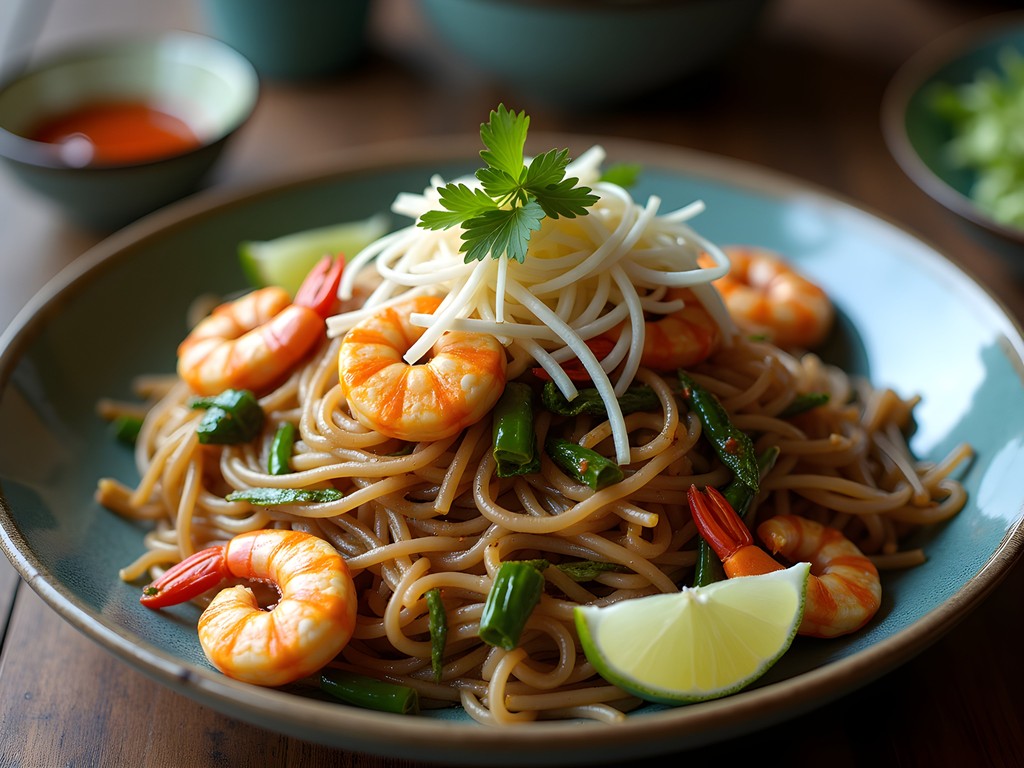
💡 Pro Tips
- Many Chinese-Indonesian establishments close by 8 PM, plan accordingly
- Look for places where multiple generations work together—these often maintain the most authentic techniques
- Cash is preferred at most traditional establishments
Budget-Conscious Culinary Intelligence Gathering
Operating on a government pension requires strategic resource allocation. My methodology for maximizing culinary intelligence while minimizing expenditure in Medan followed established protocols I've developed across 37 countries.
First, accommodations were selected based on proximity to food districts rather than amenities. I secured lodging at Wisma Sederhana, a basic but clean establishment within walking distance of both Kampung Keling and Kesawan. This eliminated transportation costs and facilitated early morning market reconnaissance.
For optimal sampling efficiency, I implemented the 'small portion, high variety' approach. Many establishments offer half portions (porsi setengah) upon request, enabling broader sampling without exceeding daily caloric or financial budgets. This technique allowed me to document 27 distinct dishes over a three-day period at an average cost of 25,000 IDR ($1.75 USD) per item.
Breakfasts at local warung (small family-owned businesses) provided substantial nourishment at minimal cost. A typical morning meal of Lontong Sayur (rice cakes with vegetable curry) with tea averaged 15,000 IDR ($1 USD), while delivering complex flavor profiles worthy of documentation.
Street food presented the optimal cost-to-authenticity ratio. The night market at Jalan Semarang offered particularly efficient sampling opportunities, with most items priced between 10,000-20,000 IDR ($0.70-$1.40 USD).
For those conducting similar budget-conscious culinary investigations, I recommend carrying a compact daypack for market purchases and essential gear. The internal organization system proved invaluable for keeping my field notes, camera, and water bottle accessible while navigating crowded food markets.
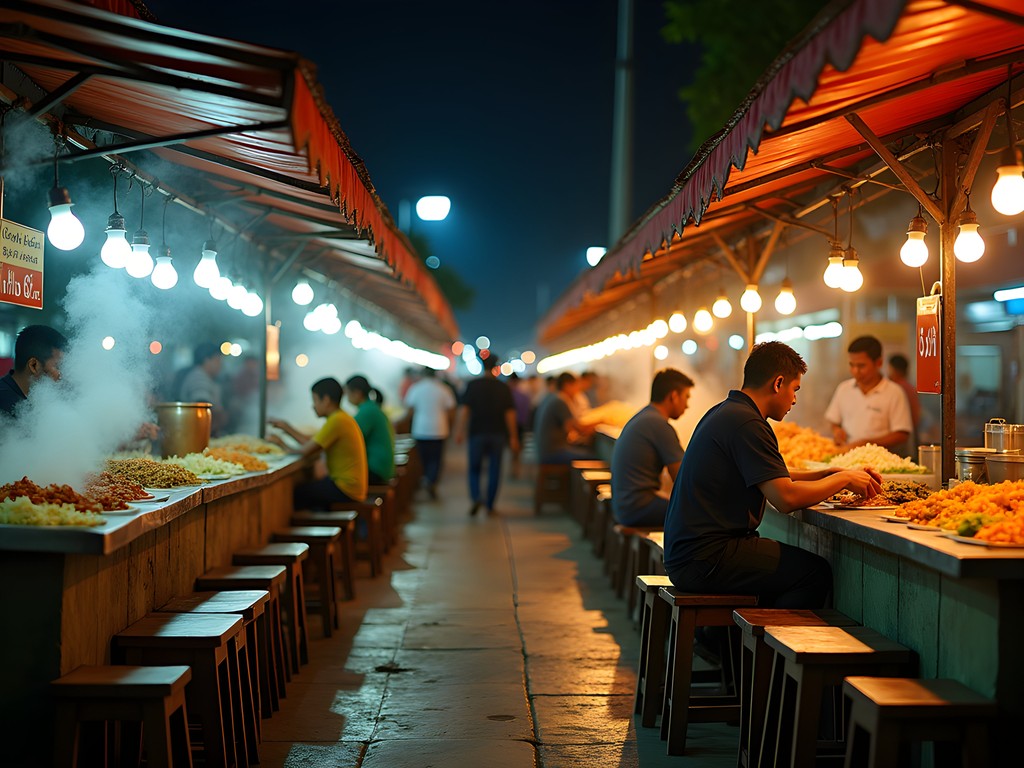
💡 Pro Tips
- Ask for 'porsi setengah' (half portion) to sample more dishes within your budget
- Breakfast at local warung offers the best value-to-cost ratio
- Street food is generally 30-40% cheaper than similar dishes in established restaurants
Final Thoughts
My investigation of Medan's culinary landscape reveals a complex archaeological record of cultural exchange preserved through cooking techniques and flavor profiles. The city presents an exceptional case study in how migration patterns, trade routes, and colonial influences can be documented through food traditions. For the budget-conscious traveler with investigative tendencies, Medan offers extraordinary value—access to living history through affordable culinary experiences that would cost ten times as much in Western countries. As with any field operation, preparation is key: bring small denominations of local currency, maintain proper hydration protocols, and approach each culinary encounter with methodical attention to detail. The evidence is clear: Medan deserves recognition as one of Southeast Asia's most significant food destinations, particularly for those who approach eating as a form of cultural archaeology.
✨ Key Takeaways
- Medan's food scene represents layers of cultural history from indigenous Batak to Chinese, Indian, and Dutch influences
- Early morning market visits provide optimal conditions for understanding local ingredients
- Budget travelers can experience extraordinary culinary diversity for under $15-20 USD per day
- Street food and family-run warung offer the best value-to-authenticity ratio
📋 Practical Information
Best Time to Visit
year-round (slightly drier May-September)
Budget Estimate
$30-50 USD per day including accommodation
Recommended Duration
2-3 days
Difficulty Level
Beginner
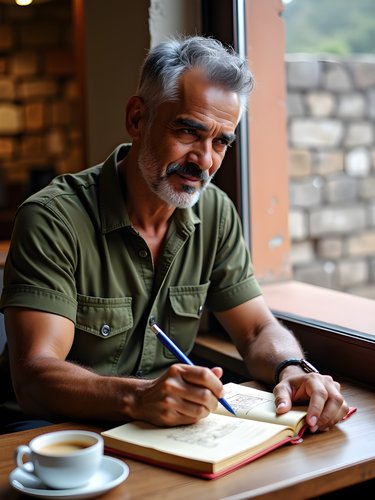
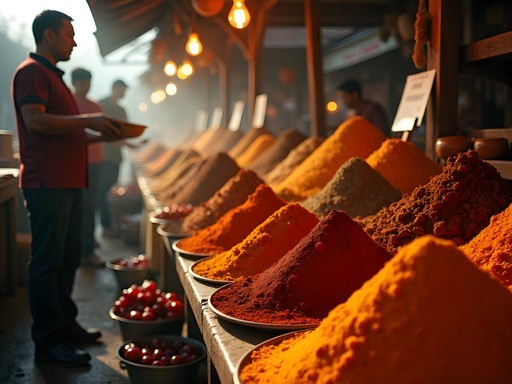
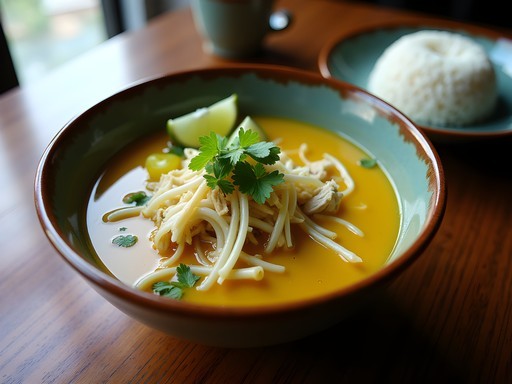
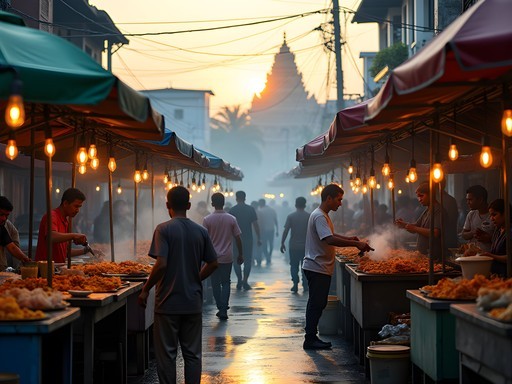
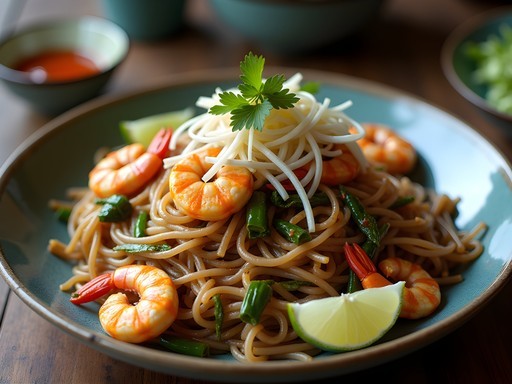











Comments
sunsetlegend
Just got back from Medan and used this post as my guide. Spot on recommendations! That rendang was life-changing.
greenmate
I'M GOING TO MEDAN NEXT MONTH AND THIS POST IS EXACTLY WHAT I NEEDED!!! Printing this out as my food guide. Those markets look INCREDIBLE! Can't wait to try everything!
bluelegend6619
Did you have any stomach issues after eating street food? I'm planning to go but I'm always nervous about that part...
tripking
Look for busy stalls where locals eat - that's always the safest bet!
Claire Hawkins
Anthony, this post brought back so many memories! We took our kids (8 and 10) to Medan last spring, and I was worried about the food being too spicy for them. Your 'Tactical Approach' section would have saved us so much time! We eventually figured out that asking for 'tidak pedas' (not spicy) worked, but it was hit or miss. The archaeological comparison is spot on - my husband is a history teacher and he kept pointing out how each dish told a story about trade routes and cultural exchanges. We found a wonderful guide who took us through Kampung Keling and explained many of the fusion elements you mentioned. I used my pocket phrasebook constantly - especially at the food stalls where no English was spoken. Would love to know if you tried the Babi Panggang Karo? That was our unexpected favorite!
tripdiver
Which dish would you say is an absolute must-try in Medan? There are so many mentioned in your post, I'm not sure where to start!
greenmate
Not Anthony but when I was there, Bika Ambon (that custard cake) and Soto Medan were incredible! The durian pancakes he mentioned are wild if you can handle the smell 😂
Kimberly Murphy
Anthony! Your analytical approach to food exploration is brilliant! I was in Medan last year and completely missed the Chinese culinary influences you mentioned. The way you connected the dots between cultural history and flavor profiles is exactly why I follow your work. That section about Kampung Keling was eye-opening - I need to revisit and pay more attention to those fusion elements. Did you find the spice markets overwhelming at first? I certainly did until a local showed me how to navigate them properly!
sunsetlegend
Kimberly - any tips on the best time to visit those markets? Planning a trip there soon!
Kimberly Murphy
Early morning is best! Around 7-8am when everything is freshest and the locals shop. Bring small bills and don't be afraid to try samples!
tripking
Love how you approached Medan's food scene like an FBI investigation! Those spices in the market photo look incredible.
starperson
Your FBI background really shows in how methodically you approached the food scene! So cool!
exploreking
Great post! I'd add that Ucok Durian is worth visiting even if you're not a durian fan - the experience alone is worth it. The way they'll pick the perfect durian for your taste preference is like watching a master at work. Also, for anyone heading to Medan, don't miss trying arsik (spicy fish) - it wasn't mentioned in the post but it's a local specialty that shows off the Batak influence on Medan's cuisine.
wanderlustguide
Seconding Ucok Durian! The owner has an almost supernatural ability to match you with your perfect durian.
nomadperson
Did you try bika ambon?? I've heard it's amazing there!
Venture X
Premium card with 2X miles, $300 travel credit, Priority Pass